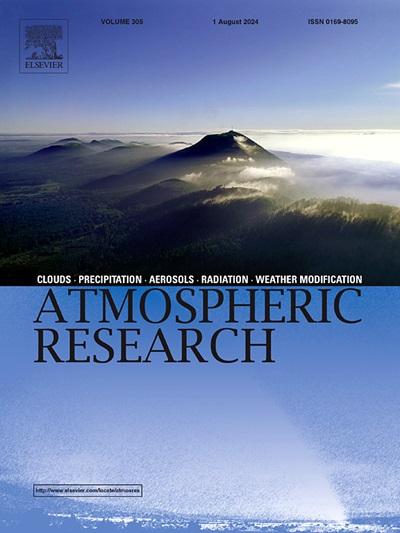Correction for remote estimation of return-stroke peak current using semi-supervised learning
IF 4.5
2区 地球科学
Q1 METEOROLOGY & ATMOSPHERIC SCIENCES
引用次数: 0
Abstract
The return-stroke peak current is an important parameter provided by the lightning location system and plays an important role in atmospheric electricity. In this paper, a new method combining classical estimation methods and semi-supervised learning techniques is proposed for more accurate remote estimation of return-stroke peak currents. The model achieves the prediction of propagation error, and hence the correction of return-stroke peak current estimation, in a large amount of unlabeled data by using the pseudo labels established by the multi-station consistency assumption to train the feature extraction capability, and then fine-tuning the output layer with a small number of 100 (±10) km real electric field strengths as the target. The results show a 22 % improvement in the mean value of the corrected estimated peak current, an improvement in the coefficient of determination from 0.8362 to 0.9178 and a reduction in the root mean square error from 21.51 % to 10.67 % with respect to the peak current calculated using empirical equation derived from rocket-triggered lightning and the electric field at close range. The proposed method is not only applicable to the Chinese region and our network but also can be extended to the global and other networks.
利用半监督学习对回程冲程峰值电流的远程估计进行校正
本文章由计算机程序翻译,如有差异,请以英文原文为准。
求助全文
约1分钟内获得全文
求助全文
来源期刊

Atmospheric Research
地学-气象与大气科学
CiteScore
9.40
自引率
10.90%
发文量
460
审稿时长
47 days
期刊介绍:
The journal publishes scientific papers (research papers, review articles, letters and notes) dealing with the part of the atmosphere where meteorological events occur. Attention is given to all processes extending from the earth surface to the tropopause, but special emphasis continues to be devoted to the physics of clouds, mesoscale meteorology and air pollution, i.e. atmospheric aerosols; microphysical processes; cloud dynamics and thermodynamics; numerical simulation, climatology, climate change and weather modification.
 求助内容:
求助内容: 应助结果提醒方式:
应助结果提醒方式:


